What are some of the most common related services used in schools?
Page 5: Speech-Language Pathology Services
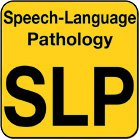 Speech and language skills are essential for learning. Students with communication disorders may struggle in both academic and social environments at school. Disorders in communication might be the result of known causes, such as neurological disorders, brain injury, or intellectual disabilities. In some case, they might be the result of unknown causes. A goal of speech-language pathology services as a related service is to help students who have trouble with communication skills perform important learning and school-related activities. These students might have difficulties with tasks that involve:
Speech and language skills are essential for learning. Students with communication disorders may struggle in both academic and social environments at school. Disorders in communication might be the result of known causes, such as neurological disorders, brain injury, or intellectual disabilities. In some case, they might be the result of unknown causes. A goal of speech-language pathology services as a related service is to help students who have trouble with communication skills perform important learning and school-related activities. These students might have difficulties with tasks that involve:
Communication Disorders
| Communication Disorders | Possible Effects on Student |
|---|---|
|
Speech disorder—Impairment in the sounds produced for communication Types of speech disorders: Articulation disorder—Abnormal production of speech sounds Fluency disorder—Hesitation or repetition of sounds or words that interrupt a person’s flow of speech (e.g., stuttering) Voice disorder—An abnormal spoken language production, usually characterized by unusual pitch, loudness, or quality of sounds |
|
|
Language disorder—Difficulty or inability to master the various systems of rules in language, which then interferes with Communication Language disorders might involve difficulties with: Form—the rule system of language such as word order, meanings, and endings (e.g., “I walked to school yesterday” versus “I walking yesterday school”). Content—the intent and meanings of words and sentences in spoken or written language (e.g., knowing someone wants food when they say “I’m hungry,” versus thinking they are tired or upset). Function—the appropriate use of language in social contexts (e.g., reading facial expressions, turn-taking, interpreting social cues) |
Academics:
Non-academic areas:
Social settings:
|
|
Hearing impairment—Hearing loss that impairs the ability to understand sounds and communication Hearing impairment might include: Sensorineural—damage to the inner ear or auditory nerve Conductive—Damage or obstruction to the outer or middle ear that blocks the sound to the inner ear |
|
(Close this panel)
- Understanding verbal directions from the teacher
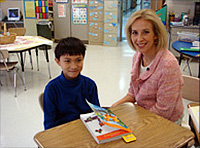 Speaking in long sentences
Speaking in long sentences- Speaking fluently without stuttering
- Projecting his or her voice so that others can hear
- Putting words together in a meaningful way
- Articulating their words
- Sharing thoughts or ideas so that others can understand the communicative intent
- Reading or writing (i.e., written communication)
- Communicating appropriately in social situations
- Hearing what others are saying
For Your Information
Though related, the terms communication, language, and speech are not synonymous.
Communication, Language, and Speech
Communication – Transfer of knowledge, ideas, opinions, or feelings. It comprises both speech and language.
Language – Rule-based method of communication, typically defined through social systems. A language disorder can affect the student’s ability to:
- Understand words or use words in context
- Express ideas verbally
- Use appropriate vocabulary
- Follow directions.
Speech – Vocal production of language, requires the coordination of oral movement to make sounds. A speech disorder can affect the student’s ability to:
- Articulate words appropriately
- Use some speech sounds
- Use appropriate volume, pitch, or voice quality
- Speak fluidly (e.g., the student might stutter)
A speech-language disorder might be the primary disability for a student, or it might be related to another disability category. For example, a student with autism may have difficulty with communication and thus require speech-language pathology services in addition to his or her special education services.
Listen as Judy Rudebusch explains speech-language pathology services as a disability category rather than as a related services area (time: 0:36).
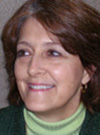
Judy Rudebusch, EdD, CCC-SLP
Division Director for Special Services
Irving Special School District, Texas
Clinical Instructor, Callier Center for Communication Disorders
University of Texas at Dallas
Transcript: Judy Rudebusch, EdD
“Speech-language impairment” is an eligibility category listed in federal regulations, and so usually speech-language services become a related service when there’s another disability category like learning disability, autism, or another disability category that requires specially designed instruction. When there’s a disability category that results in the need for specially designed instruction through the IEP then, if there’s also a speech-language impairment, that’s when speech becomes a related service.
Qualified Providers:
Most states require a speech-language pathologist (SLP) to have a minimum of a master’s degree in speech-language pathology, in addition to passing a national speech-language pathology certification exam and completing a supervised postgraduate internship. Many SLPs seek a further voluntary credential (i.e., the Certificate of Clinical Competency in Speech-Language Pathology CCC-SLP) through the American Speech-Language-Hearing Association. Due to shortages in the field, some states seek to allow those with bachelor’s degrees in communicative disorders to provide SLP services through emergency and provisional certification/ licensure. Only two states allow SLPs to practice independently with a bachelor’s degree.
Certificate of Clinical Competency in Speech-Language Pathology CCC-SLP
This credential requires individuals to complete a graduate educational degree at an accredited university, pass the national certification exam, complete a specified number of hours of clinical experience (generally 400 hours), and complete a post-graduate clinical work experience.
Roles: Speech-language pathologists work with students who have speech, language, or hearing problems that affect their communication and subsequent success in classroom activities, social interactions, literacy, and learning. Speech-language pathologists help students in academic (e.g., classroom discussions), non-academic (e.g., lunchroom interactions, understanding directions in physical education, socialization), and extracurricular (e.g., after school activities, clubs) areas.
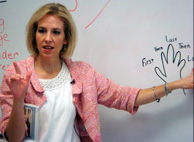 Work with teacher to set up opportunities for the student to practice target speech sounds in classroom activities
Work with teacher to set up opportunities for the student to practice target speech sounds in classroom activities- During a shared-reading story activity or a group-time circle, increase the number of speaking turns the student has; scaffold or script responses as needed
- Provide families with information, guidance, support, and coaching on ways to help their child with language and reading development at home
- Work with a small group of students with language impairments on their IEP goals of vocabulary and syntax
Non-Academics
 Build in opportunities for functional communication (e.g., requests for help such at snack time)
Build in opportunities for functional communication (e.g., requests for help such at snack time)- Spend lunchtime in the cafeteria with the student to help him or her develop social communicative interactions
- Train families how to use alternative communication techniques in settings outside of school
Extra-curricular Activities
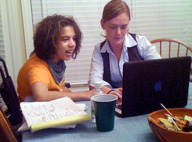 Work with students who are job shadowing, volunteering, and active in community projects as part of the school experience to communicate effectively in those settings
Work with students who are job shadowing, volunteering, and active in community projects as part of the school experience to communicate effectively in those settings- Assist students who are in the transition process to be prepared for the ongoing communication needs he or she may have in the next environment (e.g., career, college)
- Collaborate with teachers who conduct after school activities (e.g., soccer, band) so the students’ needs are met across all environments
National Professional Organization: The American-Speech-Language-Hearing Association (ASHA). For more information, please visit the ASHA website at https://www.asha.org/.

Kari Bohrer is a speech-language pathologist at an elementary school. As such, she works with students with varied needs throughout the school. She provides services both in and out of the general education classroom, depending on the needs of the students and their IEP goals. Watch the videos below to see how Kari Bohrer provides speech-language pathology services.
Alex has a speech-language disorder and receives extra support within a small-group setting (time: 2:40).
Transcript: Alex
Therapist: Today, Alex and I are meeting for Language therapy. Alex has been coming to me now for two years, and some of the things that we work on are his vocabulary, and learning that vocabulary can have many wide meanings, lots of meanings, or you can make more specific meanings. And that helps him be creative in his writing. It helps him solve problems when he’s reading or trying to figure out his math problems. Some other things that we’re talking about are the order of how we do our lessons and how we read stories and how we tell stories. So we’re working on every story, and every classroom problem has a beginning, a middle, and an end. And that helps us make sense of the lesson. It also helps us follow directions, and it helps us stay more organized in class. It generally helps us in our school day, doesn’t it, Alex?
Alex: Um hmm.
Therapist: When we know the beginning, the middle, and the end of things. And then we’re going to talk about synonyms. We’re going to come up with some synonyms.
Alex: Antonyms?
Therapist: We’re not doing antonyms today, okay? I know you like those. And then we’re going to read our story. We’re going to go back over our story and figure out how to put in some of our synonyms we’ve talked about, okay? And then finally we’re going to use our hand to retell the story of Brett’s pictures, all right?
Therapist: Alex, do you know that great big word?
Alex: “Ancient.”
Therapist: “Ancient.” A synonym for “ancient” is…
Alex: “Old.”
Therapist: You remembered. Love it. “Old.” Great.
Therapist: Guys, remember when you’re going to retell a story, we can use our hand to give us clues and remind us how to retell the story so that we don’t leave anything out. And it needs to make order, remember? First, next, last. So Alex, what does our thumb tell us?
Alex: First.
Therapist: First, what does our pointer finger tell us?
Alex: Second.
Therapist: It can tell us second or…
Alex: Or then.
Therapist: Our middle finger?
Alex: Third.
Therapist: Third or…
Alex: Next.
Therapist: Next, our ring finger…
Alex: Fourth.
Therapist: Fourth or…
Alex: Then.
Therapist: And finally?
Alex: Fifth.
Therapist: Our fifth or…
Alex: Last.
Therapist: Last. Okay, so that helps you keep your story going in order, right? And it makes more sense.
(Close this panel)
Hannah has difficulties with the “s” sound and receives individual support (time: 3:34).
Transcript: Hannah
Therapist: Today, we’re here with Hannah, and Hannah and I have been working on her speech sounds. Last year, Hannah came to me and we began to work on primarily her “S” sound because we had noticed in her first-grade class that she was getting what we call the little slushy with her speech. And it was somewhat hard for other kids and her teacher to understand her. And Hannah’s a very smart child, and we didn’t want anything to interfere with her with others understanding her because she has a lot of things to say. So some things that we’ve done is working on proper placement for her “S” sound, giving her the vocabulary to self correct her sounds whenever she may be by herself, or if someone says to her, “I can’t understand you,” then she knows how to correct her sound even if I’m not there to give her some clues. So, Miss Hannah, why don’t we show them the correct placement for a good “S” sound. First of all, tell us what you do to make a good…
Hannah: I put my tongue on my bumpy spot.
Therapist: Yes, your bumpy spot. Where is your bumpy spot?
Hannah: Right here
Therapist: Yes, right behind your teeth, okay, and we call it a bumpy spot because it feels bumpy to our tongue when we put our tongue up there. Do we let our teeth stay open or do we close them in a nice smile?
Hannah: Close them in a nice smile.
Therapist: Um hmmm, okay, and we also talk about how instead of air coming out the sides, air comes out the…
Hannah: The middle.
Therapist: Out the middle of our mouth, so let’s give them a good ssssss…
Hannah: Ssssssss.
Therapist: There you go, good job. Okay, so let’s first of all start off with five ssss sounds or five ssss words, okay? Let’s try “cereal.”
Hannah: Cereal.
Therapist: Okay, now let’s swallow. Really put that tongue up there. Ssssss…
Hannah: Cereal.
Therapist: Oh, that sounded perfect. Okay, how about “stop sign”?
Hannah: Stop sign.
Therapist: Um hmm, and then “sandals”?
Hannah: Sandals
Therapist: Um hmm, and “sun.”
Hannah: Sun.
Therapist: And “sip.”
Hannah: Sip.
Therapist: There you go! Okay, let’s have you do a little bit of reading with your ssss sound. Now before we get started, I want you to look on there and find some ssss sounds where they’ll be.
Hannah [pointing to words with ssss sounds on her book cover]: “Miss Nelson is missing.”
Therapist: Let’s quickly find some ssss words. Okay, what is that word?
Hannah: Kids.
Therapist: Um hmmm, “kids.” Let’s really think about our ssss coming out. “Kids.”
Hannah: Kids.
Therapist: Oh, that sounded nice. It was nice and sharp and quick. Can you try that one for me?
Hannah: Misbehaving.
Therapist: Misbehaving.
Hannah: Misbehaving.
Therapist: Oh, that sounds good. Okay, oh, I see another one coming up. Which one do you see?
Hannah: Spitballs.
Therapist: Um hmm, good.
Hannah: Stuck.
Therapist: Okay.
Hannah: Stealing.
Therapist: Wow, let’s find one more.
Hannah: School.
Therapist: Perfect! Good job. So, that ssss happens a lot in our speech, doesn’t it?
(Close this panel)
the SLP's Corner
Listen as Judy Rudebusch discusses speech-language pathology services.

Judy Rudebusch, EdD, CCC-SLP
Division Director for Special Services,
Irving Special School District, Texas
Clinical Instructor, Callier Center for Communication Disorders
University of Texas at Dallas
Service delivery options
(time: 1:15)
Working on a team (time: 1:48)
Working with students who have language-learning problems (time: 1:57)
Transcript: Judy Rudebusch, EdD – Service Delivery Options
There are two main things that a speech pathologist should consider when selecting service delivery options or models, and that is least-restrictive environment and the other is what is going to be the most functional context for the child to learn the language or speech skills that they need in order to make progress in their IEP and therefore make progress in the general curriculum. Everybody that we work with is in school, and so the main context for learning is the classroom, and the main context for improving communication skills becomes the language of schooling, the language of the curriculum, the language of the classroom, discourse of the classroom. We really want to move on a continuum from conversational interaction to literate formal language that you can handle either in written or verbal modes. You want to really push children towards that literate end. In terms of service delivery, if you’re really valuing the context where the children have to learn the skills, you will probably want to provide more than a pullout model, especially when there’s a language disorder.
Transcript: Judy Rudebusch, EdD – Working on a team
In an ideal situation, there’s a multidisciplinary team of assessment professionals that get together and look over a referral. When there are speech or language concerns listed in the referral, the speech pathologist is included in the multidisciplinary team that conducts the comprehensive evaluation to look at whether or not there’s a need for specially designed instruction, special education, and related services. So from the outset the speech pathologist can and should be part of a multidisciplinary team. In terms of the IEP, after you have the evaluation and you go to the IEP team meeting to consider eligibility and if the child meets the eligibility criteria, then an individual program is developed to help the child meet grade-level standards through the special education or specially designed instruction and related services. The speech pathologist becomes one of the group of educators sitting around the table with the family, and possibly the student, considering what services are needed in order to help them meet grade-level or course expectations. Depending on the student, the speech pathologist may have more of a primary role—if most of the concerns for the student relate to communication skills, speech and language skills—or maybe a little bit more in the background, if there are other disability conditions that take up more of the discussion. But always a member of the team, always giving input, bearing in mind communication skills and how important speech and language skills are for developing literacy and making it through school.
Transcript: Judy Rudebusch, EdD – Working with Students Who Have Language-Learning Problems
We have speech pathologists who do some remarkable work with children who have language-learning disabilities. They receive specially designed instruction through special education for a learning disability. Usually that’s with an inclusion teacher in the general ed classroom, but they also receive speech-pathology services because of a language disorder. The student is in fourth grade and really struggling more than he struggled in third grade because the reading level, the textbooks, and the instruction changes so much in the curriculum at fourth grade. So the related services that the speech pathologist provides is like in a pre-teach and review model. Working with the special education inclusion teacher and the fourth-grade teacher to look at what’s coming up next in terms of a unit and the vocabulary, the sentence structure, the concepts, and the questions that are going to come up, the speech pathologist does a pull-out with the student, to do a pre-teach, so that when the classroom gets to the content or the material the child knows some answers and can participate in class. Then the teach piece goes on, and the student still struggles to keep pace, and so the speech pathologist then comes back and does a sort of a re-teach session in a pull-out or a pulled-to-the-side during small-group instruction. I think it’s really exciting with students who also language disorders to combine service delivery models to get the best effect. So you can do a pull-out. You can leave the inclusion teacher, the special education teacher, and the classroom teacher to do the co-teaching and then come in during small-group instruction. Just make sure that student is in the speech pathologist’s group to go over it and do a re-teach.
Listen as Susan Karr discusses supporting teachers (time: 1:01).

Susan Karr, MS, CCC-SLP
Associate Director, School Services in Speech-Language Pathology,
American Speech-Language Association
Rockville, MD
Transcript: Susan Karr, MS, CCC-SLP
Speech-language pathologists are an integral part of the education team. They can support teachers in helping students with communication disorders, in particular literacy issues, speech and language disorders related to reading, spelling, and writing. Many academic problems have an underlying language basis to them, and teachers can really benefit by the training and skills that speech-language pathologists have. I would say to utilize their skills and training and work together collaboratively to be able to help students succeed in schools, teachers have their perspective and speech-language pathologists have their unique perspective, so together they can really contribute to helping students’ success.